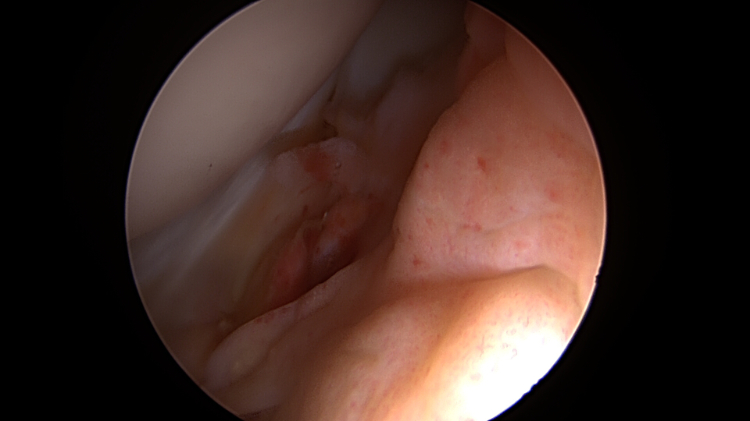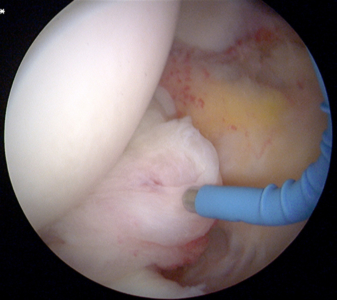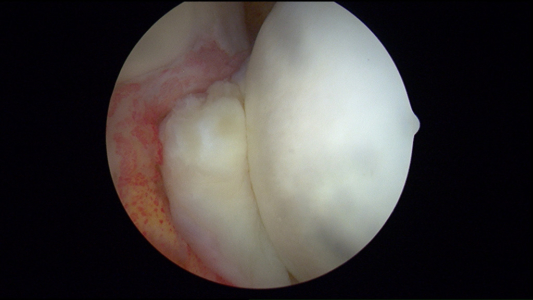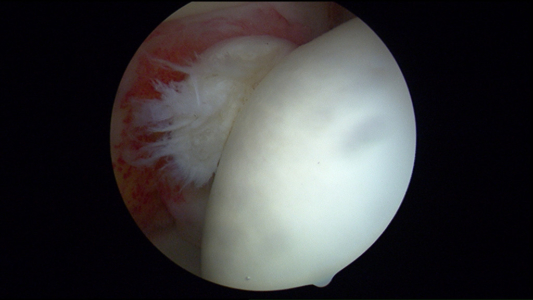The ligamentum teres of the hip connects the femoral head to the acetabulum. It is an important in providing hip stability and supplies blood to the femoral head. Damage to the ligamentum teres is most often caused by traumatic injury or repetitive twisting movements. The ligamentum teres of the hip connects the femoral head to the acetabulum. It is an important in providing hip stability and supplies blood to the femoral head. Damage to the ligamentum teres is most often caused by traumatic injury or repetitive twisting movements.
Office Appointments and Telemedicine with Dr. Carreira

You can also book an office appointment or a telemedicine visit by calling Dr. Carreira’s office at 404-355-0743. Book now.
A ligamentum teres tear or rupture can lead to severe pain. This ligament connects the ball of the hip joint (femoral head) to the hip socket (acetabulum). Injuries to the ligamentum teres include complete tears, partial tears, and degenerative fraying. You may feel pain or a clicking sensation in your hip after a twisting injury, dislocation or subluxation of the joint from major trauma, fall from a height, injury from contact or collision sports, and even chronic inflammatory conditions. Your doctor will evaluate you, and help make this diagnosis.
What is the Ligamentum Teres?
The ligamentum teres (LT) or ligamentum capitis femoris is a flat pyramidal shaped ligament located intra-articularly in the hip connecting the transverse acetabular ligament to the fovea capitis of the femoral head. The function of the ligamentum teres has been debated for many years and is still not completely understood; however, advancements in hip arthroscopy have lead to a better understanding of its function and treatment.
Histological studies of the LT revealed that the ligament is composed predominantly of collagen fibers, fibrous tissue, and adipose tissue, with an overlying layer of synovium. These studies also found blood vessels of various sizes and nerve bundles of both proprioceptive and nocioceptive free nerve endings suggesting that the LT has both mechanical and biological functions.1,2 Some suggest that the LT is an embryonic remnant that does have an important role in the adult hip. Cadaveric studies have revealed that the LT does play some role in hip stability and biomechanics by acting as an end-range stabilizer at angles >90˚ of hip flexion.3 Utilizing arthroscopy to visualize the LT in cadaveric specimens Kivlan et al. determined the LT provides anterior and inferior stabilization of the hip by forming a “sling-like” structure when the hip moves into flexion-abduction.4
Detecting Ligamentum Teres Tear
The presence of LT tear has been extremely difficult to assess preoperatively with no accepted clinical test. There are many proposed mechanisms of LT injury including traumatic injury, femoro-acetabular impingement (FAI), and repetitive microtrauma. Injuries involving hyperabduction, twisting, or a fall on a flexed knee should raise clinical suspicion of a LT tear. Groin pain radiating to the medial thigh, radiation of pain to the buttock, instability when squatting, painful clicking, locking, and giving way are all symptoms associated with an LT injury.5 O’Donnell et al. described a clinical test in which the hip is flexed to 70˚ and abducted to 30˚, minimizing bony or labral impingement, then the hip is fully internally and externally rotated. Pain in either direction is indicative of a positive test result. Out of 150 patients this test showed 90% sensitivity and 85% specificity.6
The incidence of LT tear is highly variable, ranging from 8% to 51% of patients undergoing hip arthroscopy, depending on the classification system used to define the lower threshold of a tear. In 1997 Gray and Villar created a classification system for characterizing LT tears seen at hip arthroscopy into three groups: complete rupture, partial rupture, and degenerate.7 Recently Salas and O’Donnell created a new classification system of LT tears, which addresses possible pathological mechanisms of LT tears and offers a guide to treatment. The classification consists of 6 groups ranging from inflammation and redness of the LT to complete LT tear.8
Recommended Treatment for Ligamentum Teres Tear
Recommended treatment for LT tear includes: synovectomy, debridement, removal of impingement, tightening of the antero-superior capsule, and LT reconstruction. No studies have compared these options to outcomes.
Treatment of Ligamentum Teres Tear: Arthroscopic Debridement
An exciting treatment option available for this condition is called an arthroscopic debridement. This technique is performed by a highly skilled arthroscopic orthopedic surgeon through 2 or 3 small portals (1cm in length incisions) made in your skin. This procedure uses specialized equipment to view, trim and remove damaged fragments of your ligament causing impingement and pain. Once the damaged ligament is treated the pain typically goes away.
Video of Treatment of Partially-Torn Ligamentum Teres in Hip Arthroscopy
Photos of Ligamentum Teres Tear
Photo of Completely Absent Ligamentum Teres

A completely absent ligamentum teres following a traumatic dislocation in a 17-year-old male, as noted in an arthroscopic inspection of the hip.
References:
- Dehao BW, Kong Bing T, Loh Sir Young J. UNDERSTANDING THE LIGAMENTUM TERES OF THE HIP: A HISTOLOGICAL STUDY. doi:10.1590/1413-78522015230101030.
- Haversath M, Hanke J, Landgraeber S, et al. The distribution of nociceptive innervation in the painful hip: a histological investigation. Bone Joint J. 2013;95-B(6):770-776. doi:10.1302/0301-620X.95B6.30262.
- Martin HD, Hatem MA, Kivlan BR, et al. Function of the ligamentum teres in limiting hip rotation: a cadaveric study. Arthroscopy. 2014;30(9):1085-1091. doi:10.1016/j.arthro.2014.04.087.
- Kivlan BR, Richard Clemente F, Martin RL, Martin HD. Function of the ligamentum teres during multi-planar movement of the hip joint. Knee Surg Sports Traumatol Arthrosc. 2013;21(7):1664-1668. doi:10.1007/s00167-012-2168-2.
- O ’Donnell JM, Pritchard M, Salas AP, Singh PJ. The ligamentum teres—its increasing importance. doi:10.1093/jhps/hnu003.
- O’Donnell J, Economopoulos K, Singh P, Bates D, Pritchard M. The Ligamentum Teres Test: A Novel and Effective Test in Diagnosing Tears of the Ligamentum Teres. Am J Sports Med. 2014;42(1):138-143. doi:10.1177/0363546513510683.
- Gray AJ, Villar RN. The ligamentum teres of the hip: an arthroscopic classification of its pathology. Arthroscopy. 1997;13(5):575-578. http://www.ncbi.nlm.nih.gov/pubmed/9343644. Accessed July 20, 2016.
- Porthos Salas A, O’Donnell JM. Ligamentum teres injuries – an observational study of a proposed new arthroscopic classification. J hip Preserv Surg. 2015;2(3):258-264. doi:10.1093/jhps/hnv045.






